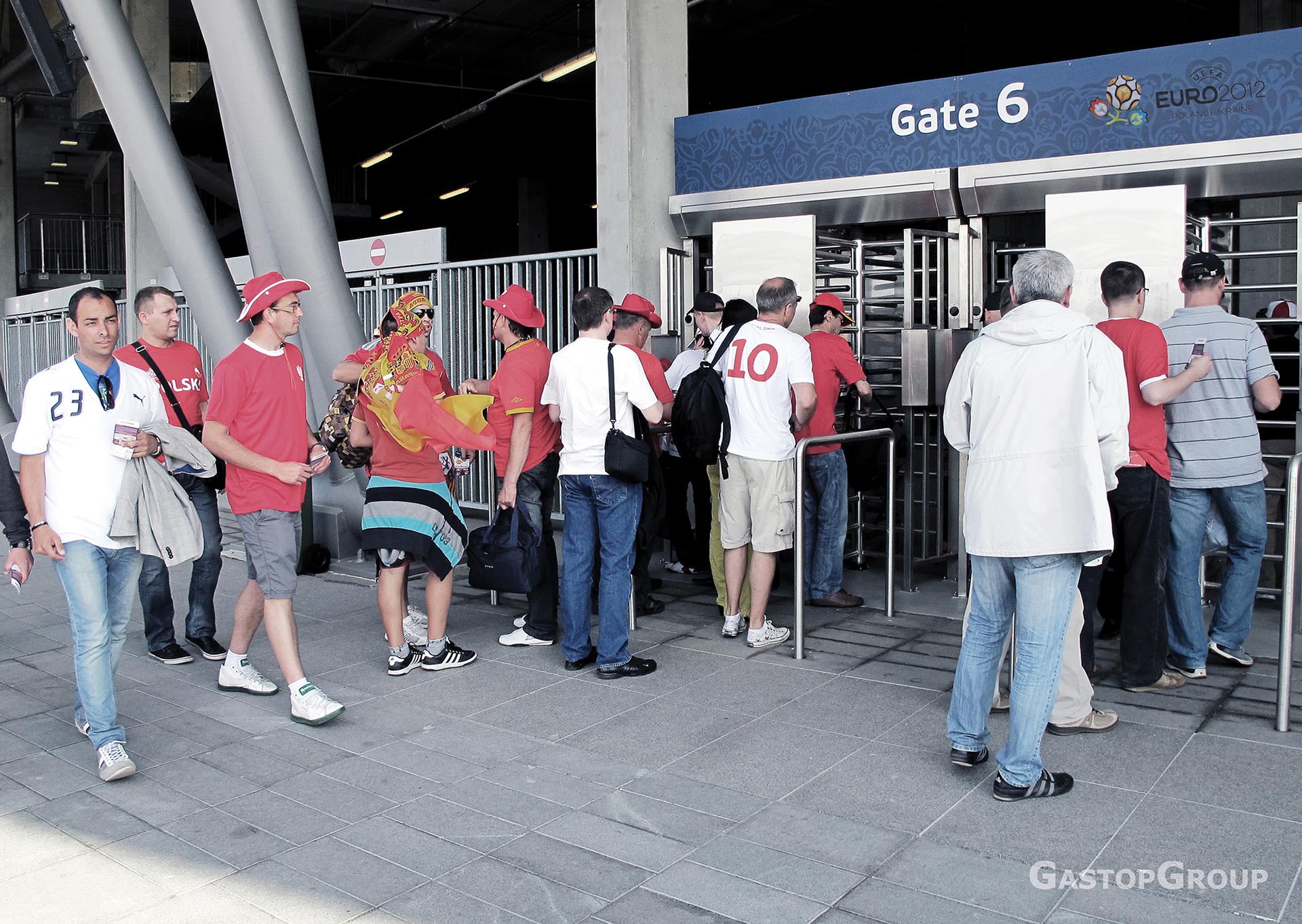F or the purpose of correct designing and execution of the pedestrian traffic control system in the facility, account for its appropriate capacity. Such assessment is to be made at the phase of concept or engineering design development.
In order to accurately calculate the capacity, gather the following information:
- maximum number of people to use the pedestrian traffic control system,
- time required for passage of maximum number of people through the pedestrian traffic control system. The aforementioned parameters are to be determined for each gate (entrance or exit from the facility) separately.
The gate capacity of the pedestrian traffic control system is a complex term, therefore, in order to analyse it, particular capacity terms must be specified and explained.
Below are the definitions of capacity:
- GATE CAPACITY – means the number of operating cycles to be performed by a device during an hour.
- PLANNED GATE CAPACITY – planned number of passages through the gate zone during an hour.
- ACTUAL GATE CAPACITY – the number of passages through the gate zone during an hour, as measured at the facility.
- STATISTICAL CAPACITY – number of passages during an hour measured at various facilities and pedestrian traffic control devices from various manufacturers.
For the purposes of planning and designing, statistical capacity parameter is applied, which totals from 500 to 600 people/hour for public buildings, and from 500 to 700 people/hour for closed facilities (e.g. workplaces, factories, sport facilities).
Factors affecting pedestrian gate capacity in the traffic control system:
- Efficiency of access control system (e.g. no unnecessary delay in card readout and sending the control signal from the reader to the pedestrian traffic control device (e.g. turnstile).
- Awareness of the gate control system and experience in use by the users. Particularly refers to closed facilities, e.g. workplaces.
- Discipline as to the passage from an external factor.
- Appropriate communication as to the use of the system (e.g. pictograms describing authorisation method/readout of the ID card).
- Appropriate personal supervision actively participating and helping users of the pedestrian traffic control system (supervisor, steward, security officer).
- Conditions at the gate (e.g. rain/snow, proper lighting).
- Appropriate direction of the pedestrian traffic by e.g. no crossing of gangways, use of appropriate barriers specifying traffic directions for persons with authorisation.


